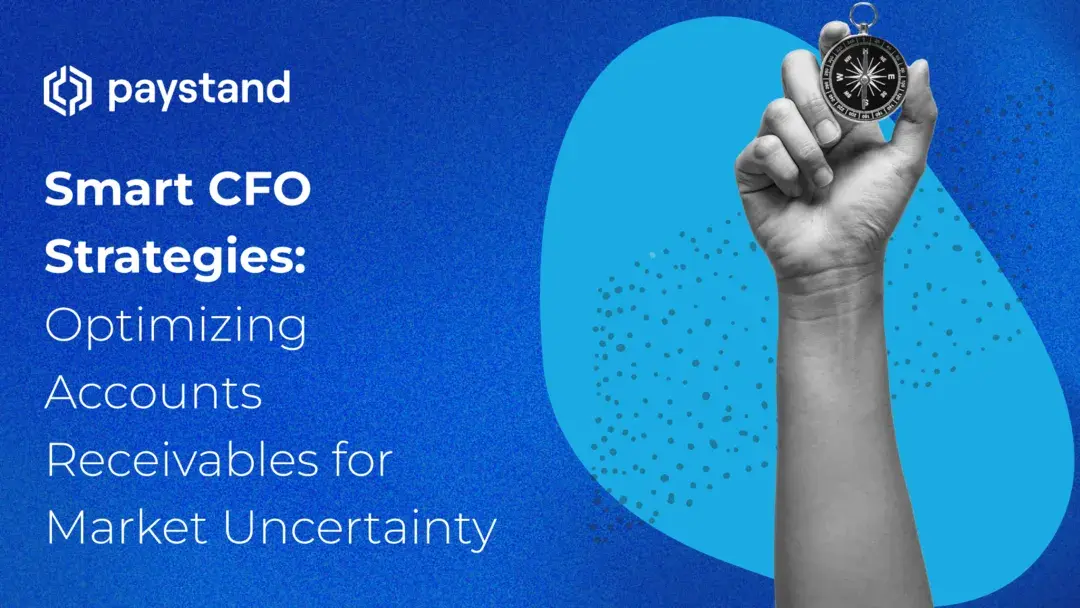Smart CFO Strategies: Optimizing Accounts Receivables for Market Uncertainty

Imagine the demand for your business doubles next week. This trend continues, and you're making more money than ever, but how is your accounts receivables department doing?
A fluctuating market doesn't always mean business loss. If your company's AR is unhealthy or struggling, exponential demand for your products or services can be a disaster for the people managing your business's lifeblood: cash. When your business is scaling up, the last thing you need is to become your bottleneck.
Adding more employees is not the only way to plan for an influx of cash. Like an annual health checkup helps us keep our bodies in shape, an "AR Health Checkup" can help CFOs identify weak spots and ensure cash flow is healthy and ready to scale.
But what if the business goes the other way? If a crisis reduces demand, would you have to recalibrate? Will you have the necessary cash flow to ride out the change?
Here are some questions CFOs can ask when evaluating AR health and not get blindsided by positive or negative market changes.
What Does It Cost Your Company to Get Paid?
Wire transfers and credit cards come with 3% fees or more. Paper checks need manual entry from your AR team. Many companies have their AR teams spending hours of costly labor manually reconciling their ERP with the money that already came in. A healthy AR means costs should remain consistent and not increase when the company makes a profit.
Tip: Automation and integrations can be lifesavers when money flows like water. Think about how you can ease (and incentivize!) your clients to pay you in ways that cost less. Paystand believes that a healthy AR team should receive 10% of your payments (or less) in credit cards and checks, and you should be spending less than 10 minutes per processed invoice per month (from creation to payment).
How Long Does It Take Your Clients to Pay You?
Do you have a mess of outstanding invoices? How are you following up with people who don't pay? Can you encourage people to pay you more quickly?
When your AR department sees a business influx, the last thing they need is to waste time sending payment reminders by email or over the phone. Sometimes chasing the money you haven't gotten yet can be a real-time suck. You want to keep the money, as you'll need it sooner rather than later. The longer an invoice stays outstanding, the less likely it is to be paid.
Tip: Discounts for early payments and automated payment reminders can help you get paid sooner. Consider rewards or penalties (like turning off the service) to spare your AR department from endless follow-up. Paystand considers an under-25-days DSO, combined with less than 30% of your delinquent payments, a healthy score.
Can Your AR Department Still Function in a Crisis?
During the Silicon Valley Bank collapse, many companies found out too late that they had all their eggs in the same basket. Despite a bank collapse, AR departments must work hard to ensure FDIC ensures all their funds.
Tip: AR departments may shy away from managing multiple bank accounts because of the labor involved. But the reality today is that this can help protect your business assets in a crisis. Automating your receivable routing or investing in a spending account that skips the bank can help keep your money safe and accessible. Also, moving your AR team from manual to electronic systems can help your business stay resilient if people work from home.
Even in an Internet-driven economy moving at the speed of light (over optical cables), many AR teams still seem stuck in the dark ages.
Want to know how your AR health stands? Paystand's 5-minute AR health assessment tool can help you understand how you score and where it can improve.
Paystand's AR assessment tool shows you how your AR department measures up within three main areas: costs, cash flow, and scalability. It also provides actionable tips to keep the business healthy and efficient.
In the end, you will get the following:
- An overall health score (A-F).
- A score for each main area and an explanation of what the score means.
- Areas you can improve.
Inflation and a general business slowdown have CFOs looking into assessing cost management and overall financial performance in 2023. Taking the AR Health Assessment is the first step towards developing a plan to optimize your efforts.




